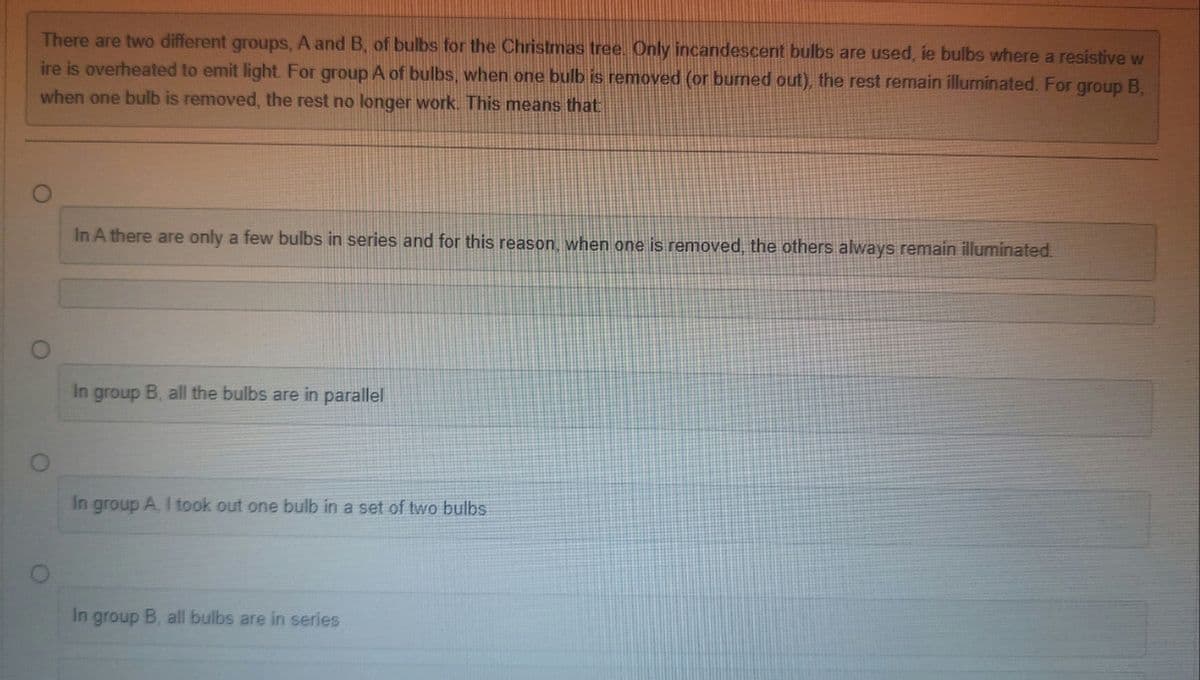There are two different groups, A and B, of bulbs for the Christmas tree. Only incandescent bulbs are used, ie bulbs where a resistive w ire is overheated to emit light. For group A of bulbs, when one bulb is removed (or burned out), the rest remain illuminated. For group B, when one bulb is removed, the rest no longer work. This means that In A there are only a few bulbs in series and for this reason, when one is removed, the others always remain illuminated. In group B, all the bulbs are in parallel In group A, I took out one bulb in a set of two bulbs In group B, all bulbs are in series
There are two different groups, A and B, of bulbs for the Christmas tree. Only incandescent bulbs are used, ie bulbs where a resistive w ire is overheated to emit light. For group A of bulbs, when one bulb is removed (or burned out), the rest remain illuminated. For group B, when one bulb is removed, the rest no longer work. This means that In A there are only a few bulbs in series and for this reason, when one is removed, the others always remain illuminated. In group B, all the bulbs are in parallel In group A, I took out one bulb in a set of two bulbs In group B, all bulbs are in series
Related questions
Question
Please solve asap and explain how you reached that solution properly. Thank you in advance!

Transcribed Image Text:There are two different groups, A and B, of bulbs for the Christmas tree. Only incandescent bulbs are used, ie bulbs where a resistive w
ire is overheated to emit light. For group A of bulbs, when one bulb is removed (or burned out), the rest remain illuminated. For group B,
when one bulb is removed, the rest no longer work. This means that
In A there are only a few bulbs in series and for this reason, when one is removed, the others always remain illuminated.
In group B, all the bulbs are in parallel
In group A, I took out one bulb in a set of two bulbs
In group B, all bulbs are in series
Expert Solution
This question has been solved!
Explore an expertly crafted, step-by-step solution for a thorough understanding of key concepts.
Step by step
Solved in 3 steps with 2 images
